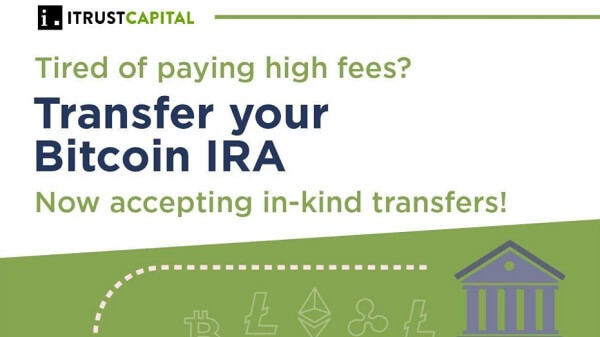
Before we get into the nitty gritty of how one simple rule created the kind of insane return on investment noted in the headline, let’s be clear on one thing.
You can’t copy this.
Actually, no human can. Even a trading bot couldn’t replicate this particular strategy in real life, because it’s a thought experiment, a proof of concept, rather than an actual way to make money in crypto trading. The exchange fees alone would kill this particular strategy for most traders.
But that doesn’t mean it’s useless — in fact, it’s the perfect way to illustrate how a simple strategy can work for real traders in real life.
So let’s dig in. What could you do, right now, today, with this algorithm?
What does Buy 80, Sell 12 hours mean?
Here’s the basic premise. In partnership with data firm The TIE, Cointelegraph Markets Pro has developed the VORTECS™ Score, an algorithmic determination of how bullish or bearish current trading conditions are for a given crypto asset.
The score is based on historical data, and it essentially sifts through the whole history of a coin or token looking for conditions that are similar to those it observes right now.
It’s looking for a variety of similarities and outliers — for instance, trading volume, recent price action, social sentiment, and even the volume of tweets about that asset.
If it finds similarities, it looks at what happened next. Did the asset go up or down? How consistent was that movement? How significant was the rise or fall?
Combining all of these data points, it creates the VORTECS™ Score, a dynamic and constantly evolving evaluation of the current trading conditions for each supported asset. The higher the score, the more bullish the outlook — and the more confident the algorithm is. Conversely, a very low score is bearish (and equally confident). A neutral score of 50 means the algorithm sees no significant correlation between current conditions and past price performance.
The Markets Pro team started testing a whole range of strategies on the day the algo went live.
A Buy 80, Sell 12 hours strategy means that the test ‘buys’ every asset that crosses the 80 score, which is considered strongly bullish. And then it ‘sells’ the asset again after precisely 12 hours.
Of course, this is not happening on an exchange — it’s happening on a spreadsheet. And since the test wants to maintain equal holdings of all assets that are within its range, it rebalances every hour.
For instance — if SOL crossed 80, and was the sole asset with that high score, the test would place 100% of its current portfolio into SOL. But if BNB then crossed 80 as well, the test would allocate half of its position to BNB in the next hourly rebalance.
Why you couldn’t do this
First, let’s assume that you’re human if you’re reading this. If you’re human, you need sleep. The test is working 24 hours a day, every day, and has been for over ten months. Even new parents get a break from the baby once in a while.
Second, the algo is not taking account of liquidity or order depth on any particular asset on any given exchange. It ‘buys’ at the current price, and ‘sells’ at the current price, which we all know isn’t necessarily realistic.
And third, exchange fees for a rebalance every hour would be prohibitive, no matter how much BNB or FTT you’re hoarding.
So why is this a valuable test at all?
The point here is to evaluate whether the VORTECS™ algorithm is good at its job.
When it sees bullish conditions, is it *right* more often than not? When the score goes up, do prices generally increase? Obviously with this test, the answer is yes.
And while the Buy 80, Sell 12 is an outlier, there are other strategies that have created massive hypothetical ROI.
For instance, Buy 80, Sell 24 hours. That one is sitting on “gains” of 13,099%. Other strong strategies include:
Buy 90, Sell 168 hours | +4,544%
Buy 80, Sell 80 | + 14,862%
In fact, with Bitcoin returning 49.5% since the tests started running on Jan 5th 2021, every single strategy has beaten the ROI from simply holding BTC.
And that signals that VORTECS™ is working correctly. It is — in general, over time — proving that historical trading conditions for digital assets can be a useful gauge for the current health of that asset.
In other words, a high VORTECS™ Score has a proven correlation to price appreciation. Not in every instance, not for every asset… but in general this ten-month trial has made a compelling case.
Warren Buffett (perhaps paraphrasing Hegel) once said that “What we learn from history, is that people don’t learn from history.”
(As a crypto skeptic, he might want to revisit his stance.)
That’s what the VORTECS™ Score is all about. Learning from history. And that’s why a hypothetical return of 36,205% is important.
It tells us we’re looking at the right history.
Cointelegraph Markets Pro is available exclusively to members on a monthly basis at $99 per month, or annually with two free months included. It carries a 14-day money-back policy, to ensure that it fits the crypto trading and investing research needs of subscribers, and members can cancel anytime.
Cointelegraph is a publisher of financial information, not an investment adviser. We do not provide personalized or individualized investment advice. Cryptocurrencies are volatile investments and carry significant risk including the risk of permanent and total loss. Past performance is not indicative of future results. Figures and charts are correct at the time of writing or as otherwise specified. Live-tested strategies are not recommendations. Consult your financial advisor before making financial decisions.
All ROI quoted is accurate at 12pm ET on 10/23/2021





 Bitcoin
Bitcoin  Ethereum
Ethereum  Tether
Tether  XRP
XRP  USDC
USDC  Wrapped SOL
Wrapped SOL  TRON
TRON  Lido Staked Ether
Lido Staked Ether  Dogecoin
Dogecoin
Be the first to comment